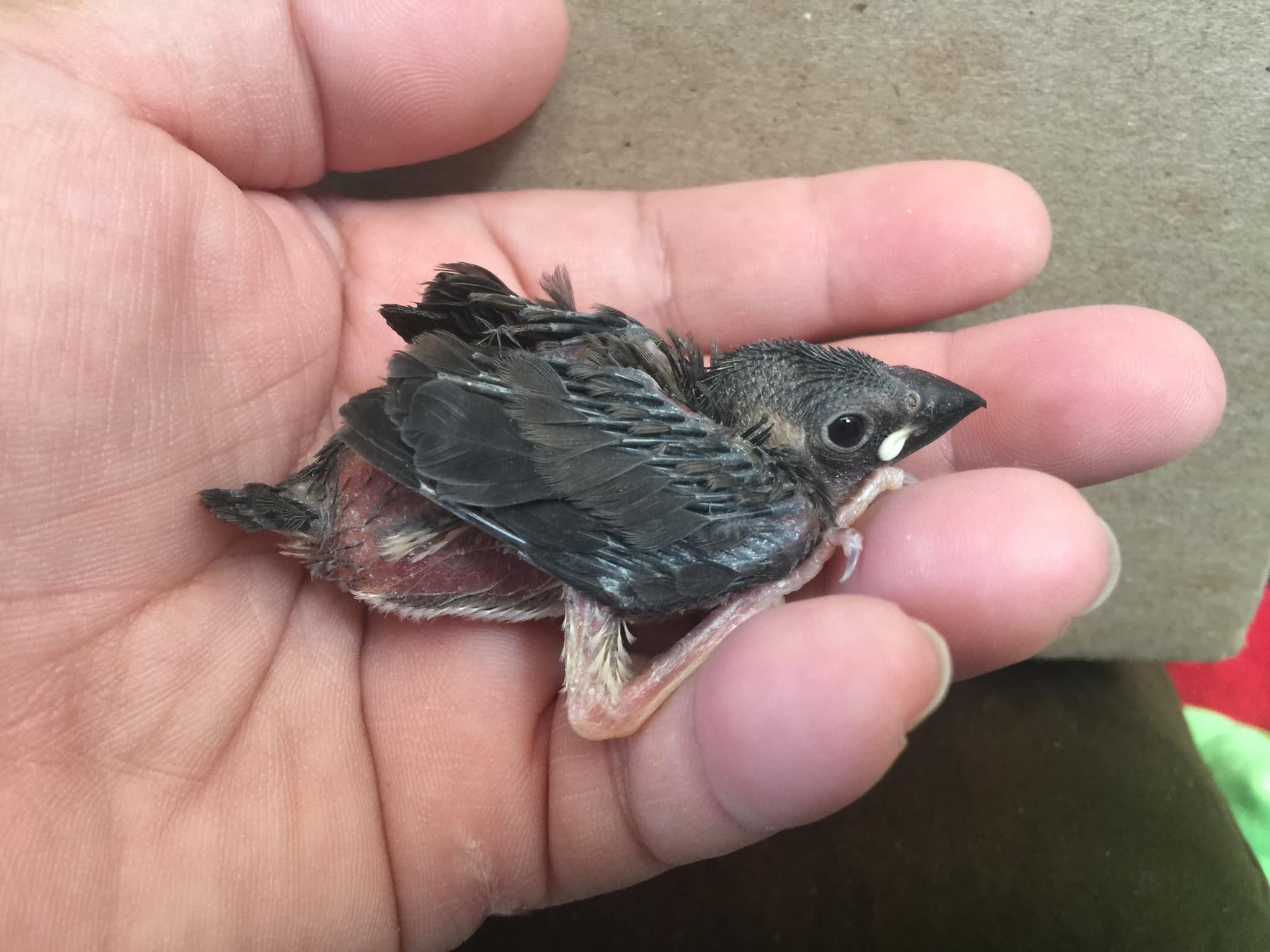
Java Finch
Diet: Java Finch
Javas eat both seed and fruit.
Basic Diet:
Formula Options:
Kaytee Exact Baby bird Formula
Harrisons Formula
Hagen Tropican Baby Bird Food
Supplemental Options
Abba Green
Provide a source of calcium, like crushed eggshells or oyster shells.
Fruit Options (Java’s eat very small amounts of fruits but do better on large amount of seeds/greens)
Banana
Mango
Cherries
Strawberry
Papaya
Apple
Blueberry
How to Feed:
Crop feeding:
Mix fruit, human baby food, and baby bird formula with water.
20% pureed fruit, 75%-80% baby bird formula, optional up to 5% supplemental abba greens. Add water to the consistency of consistent yet watery paste.
Substitute water with unflavored Pedialyte if the bird is showing signs of distress
Other Feeding Options:
Mix 30% mashed fruit 5-10% supplemental mix and 60-70% bird formula to create a chunky but very moist consistency.
Substitute water with unflavored Pedialyte if the bird is showing signs of distress
Give the mix on the end of a coffee stirrer or skewer. The baby should eat as much as it can off of it. Give time for the baby to swallow the food entirely before offering more.
Feed every 1-2 hours from sunrise to 2 hours after sunset
How much and how often to feed:
Crop Feeding
Hatchlings and young nestlings eat about . 5-1ml of formula every 30 minutes
Nestling will eat about 1 - 2ml of formula every 45 minutes to 1 hour
Fledglings: 1.5-2 ml of formula and pureed fruit every 1.5- 2 hours
Feed from sunrise to sunset. If a bird is not doing well, continue feeding 2 hours after sunset.
Other feeding methods
Hatchlings and young nestlings: feed as much as they can until they stop gaping every 30 minutes
Nestling: feed as much as they can until they stop gaping every 45 minutes
Fledglings: feed as much as they can until they stop gaping every 1-1.5 hours
Feed from sunrise to sunset. If a bird is not doing well, continue feeding 2 hours after sunset.
How to Ween:
Nestlings will start to explore and naturally peck around the cage at different things.
1. Scatter parakeet or finch seeds around the cage and hang millet spray to encourage exploration in food.
2. Put small amounts of soft (papaya or mango) fruit inside the cage, change the fruit every 6 -8 hours.
Fruit Options
Banana
Papaya
Strawberries
Blueberries
Apples
Mango
3. Start to put grass, rose buds, weeds and greens around the cage
You can offer cucumber and lettuce throughout the cage as well.
Continue hand feeding every 2 hours throughout the weaning process
Gradually decrease the amount of formula given daily as they start to peck at the other food items around the cage.
It is important not to rush the weaning process. Some birds take longer than others to wean.
Helpful Tips:
Provide a source of calcium, like crushed eggshells or oyster shells.
Fledglings can be offered pellets such as “Harrison’s brand” to add to their diet and as they wean off of formula.
Rotate the fruits and type of protein to provide a variety of nutrients
You can also feed cooked quinoa or cooked rice mixed with egg yolk and a little water off a skewer or toothpick.
Food should be given mostly mashed together to create a moist watery but substantial consistency until the bird eats on it’s own entirely.
Javas are known to travel in large flocks.

